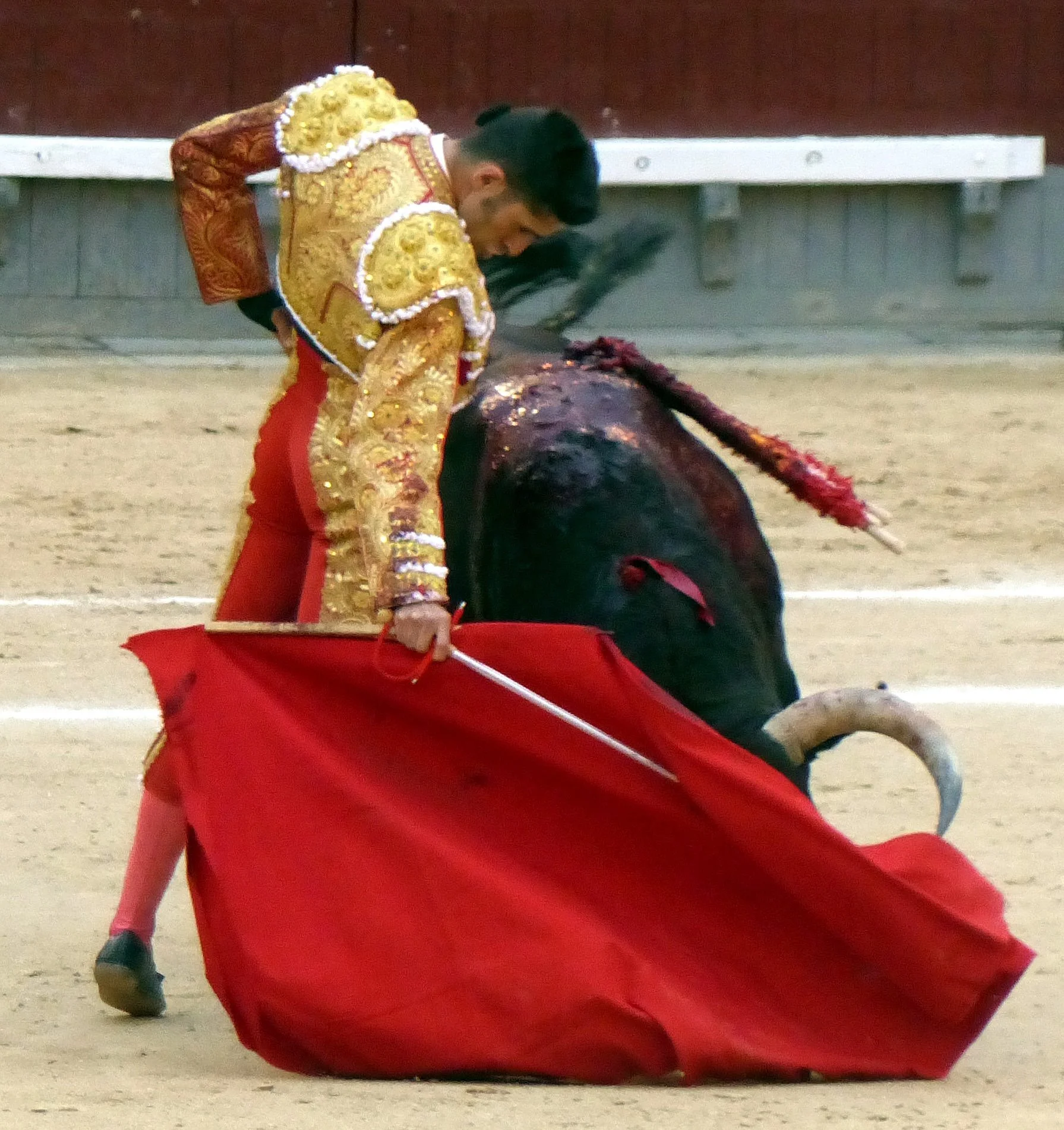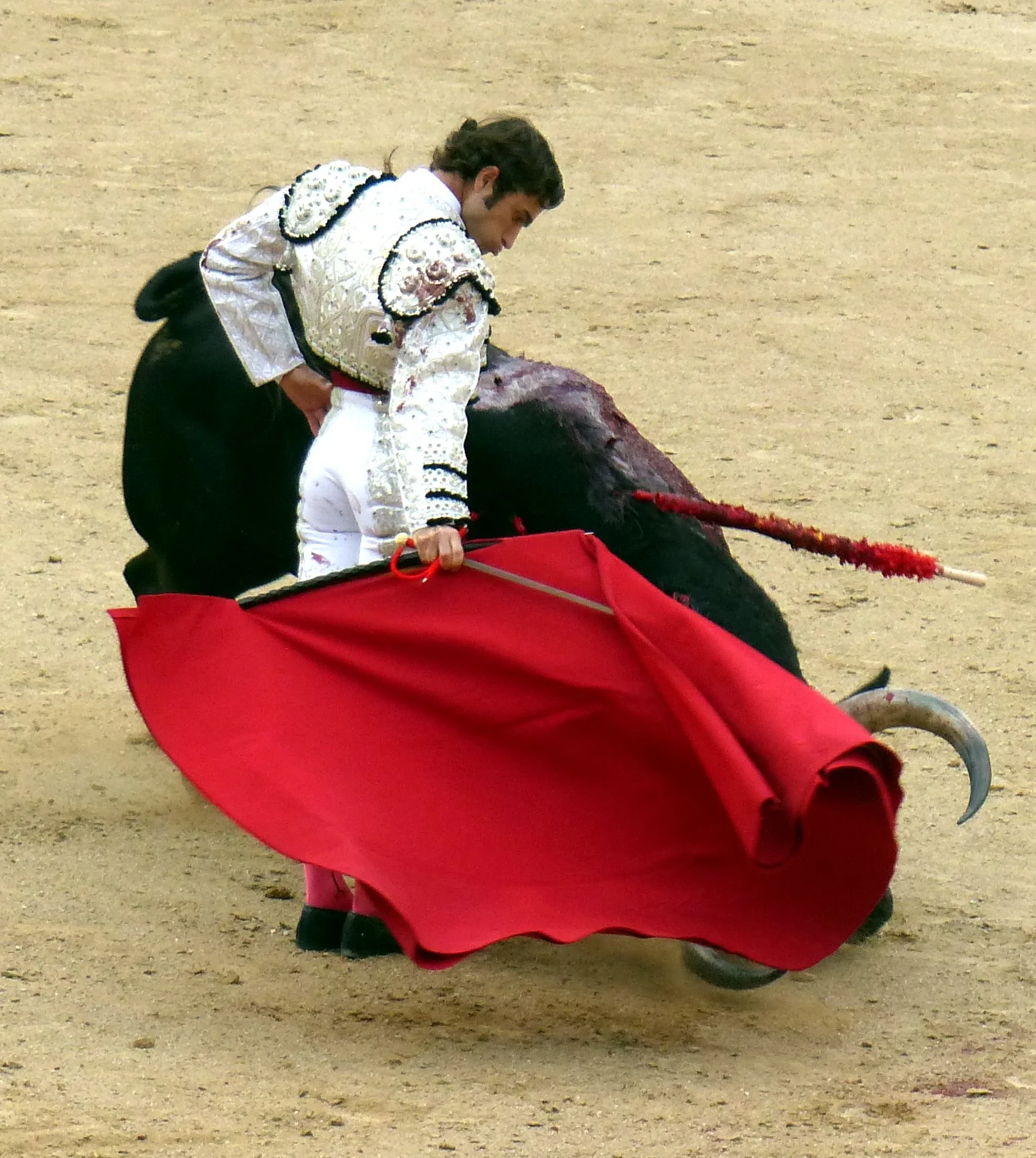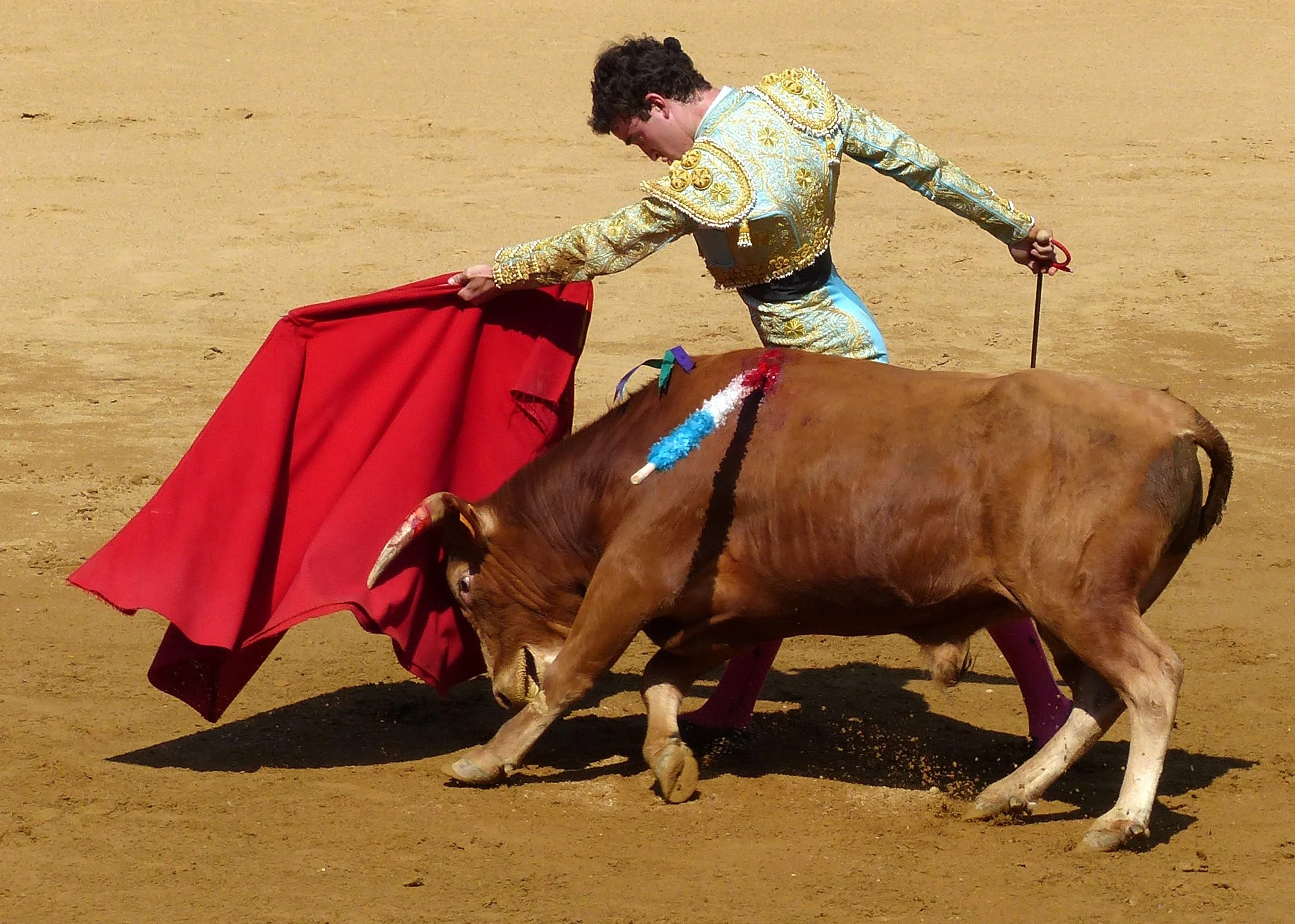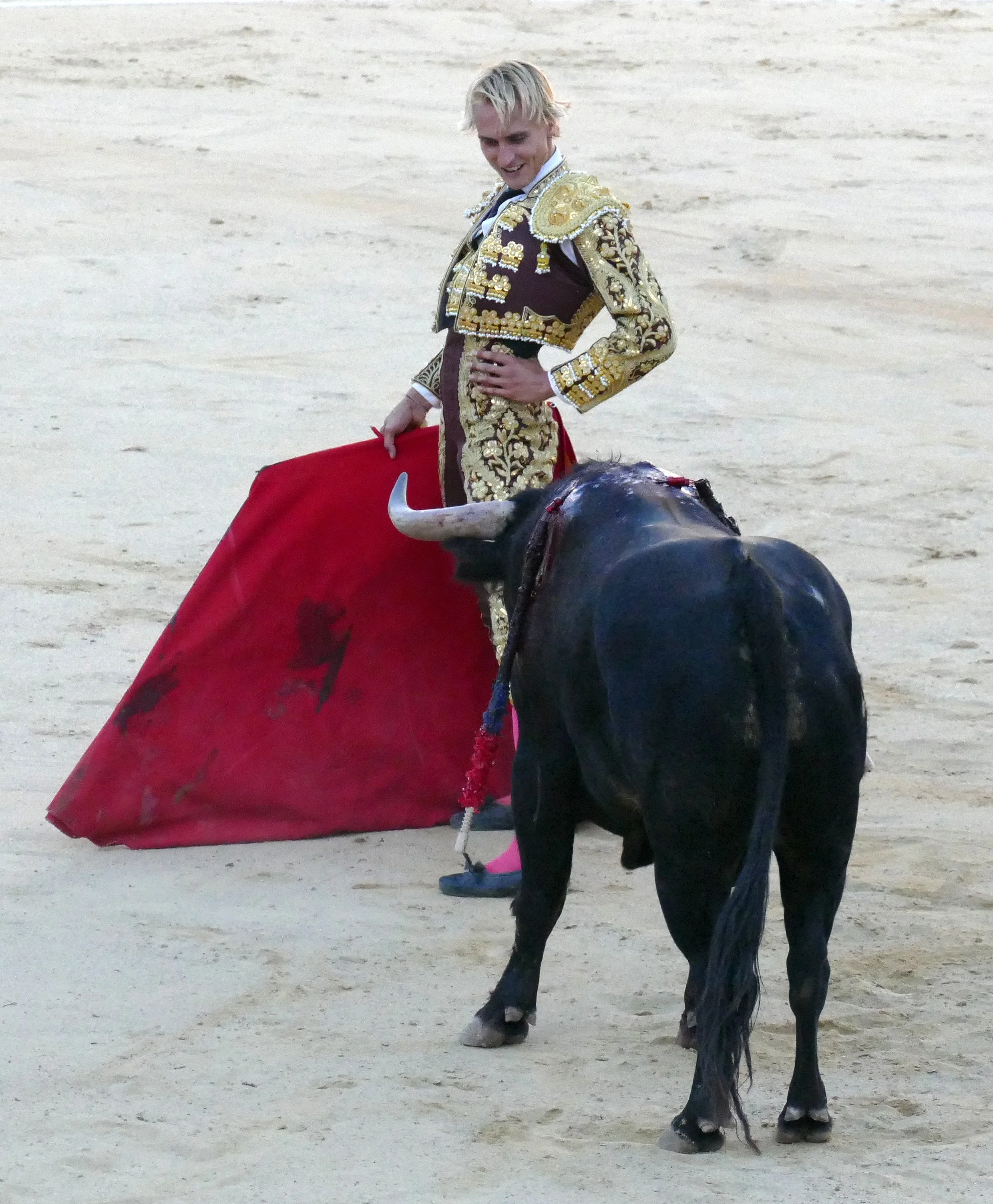Impressions from la trama final de San Isidro 2023 (Part II)
Jock Richardson
It is over ten years now since my son, my wife and I sat, late into the night in our hotel room in the Carlton, and agreed that when Aste Nagusia and the true Toro de Bilbao disappeared, the Fiesta Brava would have died. As we stood at the bus stop after the corrida on May 27, the Bilbao prediction having been long fulfilled, the Fiesta still just alive, my son, who had come up to Madrid to visit us, announced that, “There is nothing about the two corridas I have seen here that I will remember”. Fourteen bulls, six famous toreros had left not a memorable thing. I understood his feelings but, having a blog to write, still had to search for some impressions.
What happened in the bullring is easily and quickly reported. On 26 May, there was another hotchpotch of a corrida: two Núñez del Cuvillo; one Toros de Cortés and three of Victoriano del Río. The corrida unfolded in a torrential rainstorm. Miguel Ángel Perera returned to his old ways. He performed a competent faena to his first after a beautifully measured quite of chicuelinas, but his sword work was faulty. As he marched towards the fourth bull in its querencia under 6, he had me totally convinced: his purposeful walk, his positive body language and his early passes were as pure and true as could have been asked for. Then, he lost his bond with the bull and the protracted end of the faena was a demonstration of how, if a bull is allowed to go to where it wants and is not mastered, it will do so. Perera followed it, pegging the odd well-constructed rhythmic pase, round the ring to 2 and back towards the toriles, a march of 230 degrees, before predictably failing with the sword till 30 seconds before the final aviso.
Talavante
Talavante demonstrated his baroque style - which is very pleasing – an arrucina in mid series of derechazos, superb temple in his brief series of smoothly linked orthodox pases, some exquisite low pases, and a renewed ambition in all things – but the so-so quality of his bulls, the rain and the wind rendered his work, like that of Ginés Marín, something few will remember for long.
We spent the morning of the May 27 in Nuestra Señora de las Comunicaciones, now a museum, studying an exhibition of Indian paintings from San Diego. We were surrounded by elephants. Eight hours later, we were in Las Ventas watching the El Pilar elephants sent by Moises Fraile, three of them weighing over 600 kilos. (We got to see their ancestors in the Mammoth exhibition in Caixa Forum next day.) The lightest one was thrown out as too weak for the lidia. Its replacement, another El Pilar, of 531 kilos, went the same way. The only thing of interest about the Conde de Mayalde (3 tris) was that it was not thrown out.
Pablo Aguado
“I’ve never seen Pablo Aguado, what is he like?” I was asked before the corrida. I have seen him enough to be able to imply that his temple is of an almost magical quality. I have seen it most notably in his muleta work. The most impressive toreo in the corrida of the 27 May emerged in the quites of verónicas by Diego Urdiales and Pablo Aguado. The first bull of Urdiales was, by recent standards, phenomenal. It towered above the matador just as the Peñajara bull towered over Joselito before rupturing his neck in May 1987. Such juxta positionings always raise the shivers. The size did not seem to bother Urdiales, who performed a quite of five verónicas with perfect positioning, timing, temple, and depth. After another pic, Pablo Aguado justified my confidence in his temple with three very similar right-handed verónicas of impeccable structure and delivery. How often do we see a true competition in quites? The old-timer Urdiales, what a great torero he is, replied to the Aguado lances with a more ragged left-hand series ended with an exquisite body-wrapping media. The rain poured down, the bulls were noble enough but lacked strength, breeding, or character and the three matadors, Francisco de Manuel was the third, struggled through an afternoon of tango-clapping, offensive shouting, pinchazos and avisos, until, after two hours and a half, we could drip our way out into the Madrid night.
There has been much discussion, in the press and between aficionados, about the situation that has been brought about in Madrid. Madrid always seemed to me to be an antidote to the deterioration of Bilbao, still an example of what a great feria should be. Audiences were serious in the main; tendidos 6 and 7 were noisy but not toxic in their shouting; and behaviour in the tendidos had not reached the hooligan level. Tristan has already mentioned the messy situation in La Venta del Batán, a problem that is irritating aficionados who knew the place of old. This year, the tendidos have taken on the appearance of an ant hill. There is constant movement up and down; the rule about leaving and re-entering one’s seat during the lidia is ignored; the ponedores do their best but nobody pays attention to them; those who sit in delanteras or low filas are doomed to watching an unending procession of G and T seekers; even leaving the tendido after the corrida has become difficult because the discos and bars that attract “la juventúd” as soon as the corrida is over bring crowds that hamper movement in the corridors. We used to say, “There is always Bilbao”; then, “There is always Madrid”. These touchstones of taurine feria greatness seem to have all but gone. Has it come to, “There’s always France”?
A ponedor in our tendido asked us, “Why do you not have umbrellas?” When I told him we never used them because we did not want to molest our neighbours, his face showed that he thought we were a pair of daft old codgers. Maybe we are.
We had spent, as will be gleaned, a couple of wet afternoons in the slough of despond, raised up by only a few flashes of toreo. As we arrived at the plaza on 28 May, it was raining cats and dogs. We got awful wet. But we got a corrida that had a bit of everything, and which took all thought away from rain other than wondering whether the puddles on the sand would grow to suspension dimensions. They did not and the clouds cleared in the fifth bull.
Fernando Robleño is un torero de Madrid (no doubt he is a torero de Céret; and a torero de Vic Fezensac; and a torero of everywhere that they appreciate maturity, knowledge, los canones and the other taurine virtues as well). Today, he was brilliant. His first bull was a very tricky Albaserrada; he approached it with care, patience and by applying los canones – finding the correct cite position, offering the lure and drawing the erratic, quick-turning animal round in increasingly smooth curves - gradually brought it to his will. It was technical rather than artistic. It took him three attempts with the sword to dispatch the bull; that did not prevent a huge ovation.
Fernando Robleño
I emerged from the corrida of 15 May 1964, the one in which Antonio Bienvenida faced six saltillos by himself and enjoyed a great triumph - it is worth a Google – to join a small tertulia of British aficionados. My naïve response to the enthusiastic and positive discussion of his performance was that he had not killed very well and that matadors were paid to kill well. It was explained that one so ill-tutored in the art of toreo had no right to be entering a discussion of the phenomenon and that anyone who thought that the kill, important as it is, was the only or most important aspect of a performance should go away and learn about the art of toreo. That gave me a chip on my shoulder I have carried for years. Nobody likes to be told that they are wrong. My accuser, to his credit, did try to teach me about the art of toreo for years thereafter and I listened to his lessons and those of others. I have studied the arts in all their forms ever since. The man was right. I am not sure that I convinced the aficionado who today, rightly, accused Fernando Robleño of not being able to kill his albaserradas on 28 May 2023 of what my old mentor had helped convince me: the kill is only one part, important, yes, of the art of toreo. Robleño did not kill his bulls well today. But he did show us what the art of toreo is.
With his second bull, a more noble and encastado animal than his first, he produced a faena that will remain in the minds of those who saw it for a long time. It was not perfect – he was despejado and used the pico at the beginning, there was one enganche and he killed badly – but he found the correct distances for the cite, gradually brought the noble but substantial bull under his control, and prolonged his templados pases to the fullest possible extent. He kept his eyes on the bull’s head throughout and imparted a rare grace to the manoeuvres as they unfolded. The kill lost him the ear the vast majority petitioned for, and he took two vueltas to wild applause. It was one of the most complete faenas of this last stage of the feria.
The corrida had, as written above, a bit of everything. Unfortunately, that included a goring. José Garrido had scarcely started his faena to the third bull, a complicated animal without a decent intention, when it caught him and drove its horn into his thigh and damaged not only muscle but also sciatic nerve. Robleño sent it off to the butchers very promptly indeed.
The incident left Román to kill bulls four and six, actually six bis because the final Adolfo had to be replaced by a Benítez Cubero-Pallarés monster of 585 kilos. Not one of the three was endowed with the published characteristics of the toro de lidia and all Román could do was apply his well-developed workmanlike skills to keep safe, show that he was trying not to defraud, and get rid of his rotten adversaries as soon as possible.
There was a strange hush over Las Ventas on the evening of 30 May. I put it down to the fact that all the gamberros had gone to Aranjuez to find the genuine arte de toreo, but that cannot be true. Maybe it was the rain and the fact that we were to watch a lot of rather less docile juampedros than is normal. Certainly, the rain fell so constantly that to rouse alegría would have been difficult. We have seen a good deal of Victor Hernández and Álvaro Burdiel recently on televised novilladas. I have seen Lalo de María torear on only two occasions. I came to the plaza sure that the first two were near the journey to the alternativa after a long and arduous preparation and that Lalo would not have a clue about what he was being asked to do.
How tendidos 6 and 7 and the grada of 6 can assess the qualities of a bull as soon as it has entered the ring is beyond me. I thought the whole lot were respectable-looking novillos which at first showed no reason for the waving of green pañuelos or the expression of tango-clapping greetings. We chatted with a French aficionado in the bus on the way to the plaza and agreed that we, as aficionados, had taken years to be able to make even tentative assessment of bulls, and wondered how the experts born but twenty years ago could have learned so much so quickly.
Victor Hernández in sin pics times
Hernández is 23 years old and has worked his way through competitions and novillada ferias. His actions on May 30 allowed him to convince that he is ready for the alternativa. His first Fuente Ymbro was welcomed with disdain by the “experts”, yet knocked the horse over and took a second pic before charging hard in quites, banderillas and the faena. It was not a bull on rails, it was a Fuente Ymbro novillo, so Hernández was doomed to doing his best. He put heart and soul into a faena which swung from enganches and half passes to three beautifully clean and complete linked series of naturales and derechazos. Had he killed well, he might have won more than his saludos. His sincerity was proven again in his deceitful, distracted, erratically mobile fourth bull. This time, his authentic toreo came at the beginning so that the deteriorating condition of the bull was accompanied by ever more isolated and enganchados pases.
Álvaro Burdiel
It is heart-warming to watch a torero fighting against the odds with guts and dedication to convince the public of Madrid. Álvaro Burdiel’s first was a difficult and recalcitrant creature, the novillero has had some success in Madrid in the past and was not to lose his good standing easily. He went on and on trying to subdue the teenage behaviour of his headstrong but immature novillo. It was an epic struggle that went on for too long and ended in a messy kill. The 492 Kg ‘Gritador’ was one of those Fuente Ymbros offering triumph – there have been many of them – and Burdiel was just the novillero to rise to its virtues. The novillo tended to seek the man’s body, a tendency Burdiel gradually persuaded away by drawing the head down into long, pure, and complete naturales and derechazos. Its searching hooks were never fully controlled, but the faena, of correct timing and careful planning, showed Burdiel’s artistry, skill, and knowledge. Despite an estocada hasta la bola delivered at the correct time, the work was not enough to win a trophy. It was highly acclaimed.
I cannot claim that Lalo de María is a friend of mine, but he came to a NATC dinner I attended in Murcia after some morning toreo he performed in a tienta in Yecla and an afternoon appearance in a novillada in Albacete last September. His cape work in the tienta was efficient, controlled, and appropriate, his wrist movement outstanding. His appearance in Albacete showed that his mentor, José Antonio Campuzano, famous in his day for being a competent journeyman torero and cartel-filler, had still a lot of mentoring to do. The amabilidad he poured forth at the dinner was boundless, his English and Spanish perfect and his readiness to talk about his career and life selfless. That he has learned things since last September, is beyond doubt, but he still has a long way to go. What he showed most on 30 May was willingness, sincerity, persistence and, most importantly, courage. His first bull was complex and erratic, and he was unable to solve its hooking and the weakness of its charges. During his honest efforts to solve the problems there were some long and smooth classical pases of promise.
Lalo de María
His persistence was further established in the sixth bull. He tried a quite of gaoneras that were wild and enganchados, only to end with a revolera fit for a cartel. The delantales of his quite were smooth and beautifully constructed. This novillo was no more fitting for triumph than had been its brothers. For me, its unpromising nature made the brief series of clean and classical derechazos Lalo extracted from it the more praiseworthy. His entry to place his estocada was explosive, the pitón that entered his nostril dramatic, and the whole performance full of hope for his future.






